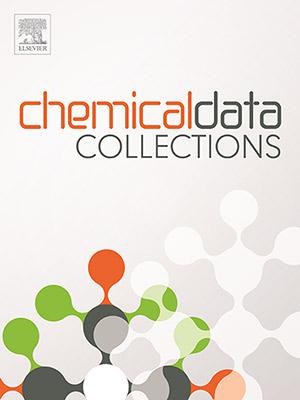Effects of nano and micro reinforcements on the viscoelastic behavior and thermal stability of silicone rubber
IF 2.7
Q2 Chemistry
引用次数: 0
Abstract
Carbon fiber, polypropylene fibers, TiO2 nanoparticles, and SiO2 nanoparticles were added to various RTV-4125 silicone rubber matrix composites in this research. Plain RTV-4125 silicone rubber was also used as a reference. The impacts of thermal stability and viscoelastic characteristics of additives on the silicone rubber were examined using TGA analyses. The degradation rates were found to be connected to the following samples: SR, SR/TiO2, SR/SiO2, SR/PP, and SR/C, in order of performance in TGA analysis, which was carried out within the temperature range of 25 to 700 °C. It was via this examination that the samples' maximum degradation temperatures (Tmax1 and Tmax2) and rates were determined. There was also measurement of the storage modulus and loss modulus. The optical and electron microscopy of the samples were studied to evaluate the morphology and structure, and Fourier Transform Infrared Spectroscopy to assess the functional groups and bonds within the structures. The findings show that adding additives to silicone rubber makes it more thermally stable, and that throughout a broad temperature range, the composite samples viscoelastic behavior is temperature independent.
纳米和微增强剂对硅橡胶粘弹性和热稳定性的影响
在RTV-4125硅橡胶基复合材料中分别添加碳纤维、聚丙烯纤维、TiO2纳米粒子和SiO2纳米粒子。以普通RTV-4125硅橡胶为参考材料。采用热重分析方法考察了添加剂对硅橡胶热稳定性和粘弹性的影响。在25 ~ 700℃的温度范围内,降解速率依次与以下样品有关:SR、SR/TiO2、SR/SiO2、SR/PP和SR/C。通过这种检测,确定了样品的最大降解温度(Tmax1和Tmax2)和速率。还测量了存储模量和损耗模量。通过光学显微镜和电子显微镜对样品的形貌和结构进行了评价,并用傅里叶变换红外光谱对结构中的官能团和键进行了评价。研究结果表明,在硅橡胶中添加添加剂使其更热稳定,并且在很宽的温度范围内,复合样品的粘弹性行为与温度无关。
本文章由计算机程序翻译,如有差异,请以英文原文为准。
求助全文
约1分钟内获得全文
求助全文
来源期刊

Chemical Data Collections
Chemistry-Chemistry (all)
CiteScore
6.10
自引率
0.00%
发文量
169
审稿时长
24 days
期刊介绍:
Chemical Data Collections (CDC) provides a publication outlet for the increasing need to make research material and data easy to share and re-use. Publication of research data with CDC will allow scientists to: -Make their data easy to find and access -Benefit from the fast publication process -Contribute to proper data citation and attribution -Publish their intermediate and null/negative results -Receive recognition for the work that does not fit traditional article format. The research data will be published as ''data articles'' that support fast and easy submission and quick peer-review processes. Data articles introduced by CDC are short self-contained publications about research materials and data. They must provide the scientific context of the described work and contain the following elements: a title, list of authors (plus affiliations), abstract, keywords, graphical abstract, metadata table, main text and at least three references. The journal welcomes submissions focusing on (but not limited to) the following categories of research output: spectral data, syntheses, crystallographic data, computational simulations, molecular dynamics and models, physicochemical data, etc.
 求助内容:
求助内容: 应助结果提醒方式:
应助结果提醒方式:


